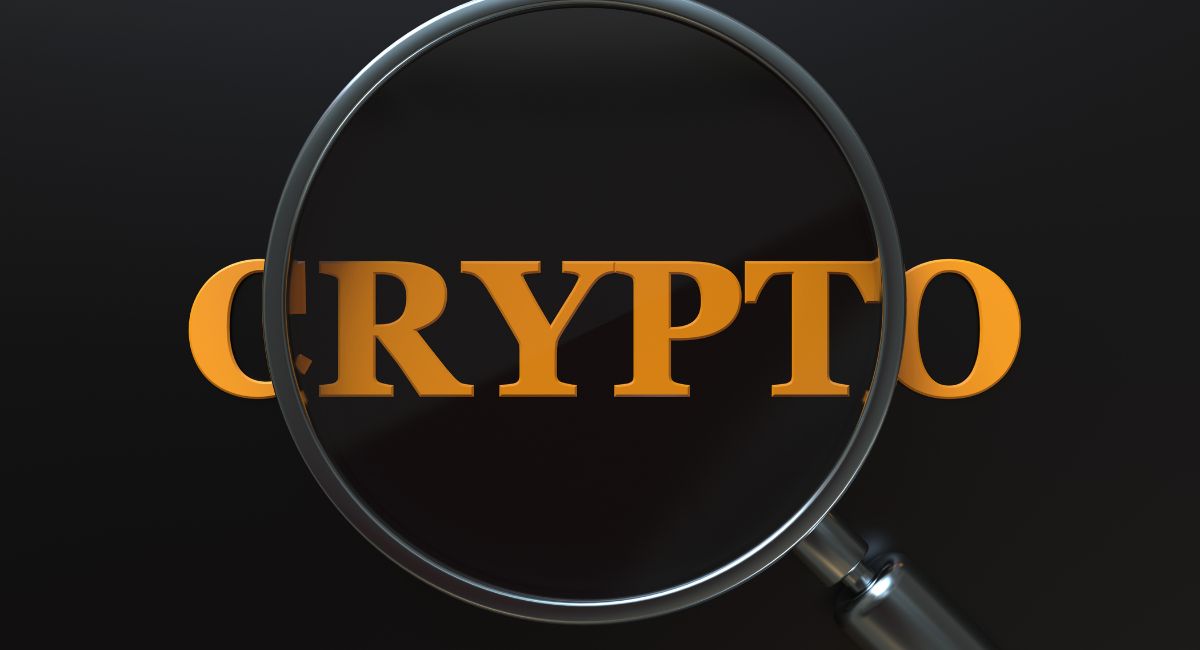What Is Crypto Vesting And Why Is It Important?

Crypto vesting refers to the process of restricting access to or selling of cryptocurrency tokens or coins by their owners for a certain period. This mechanism is primarily implemented to ensure the commitment and dedication of key stakeholders, such as founders, team members, or investors, to the long-term success of a project. Vesting is commonly employed in initial coin offerings (ICOs), token sales, or other fundraising events in the crypto space.
Here’s a detailed breakdown of crypto vesting:

1. Purpose of Vesting:
- Mitigating Dumping: Vesting prevents early investors or team members from immediately selling their tokens after a project’s launch, which could lead to a rapid devaluation of the cryptocurrency.
- Aligning Incentives: It aligns the interests of stakeholders with the project’s success by rewarding them for sticking around and contributing to its development.
2. Vesting Period:
- Time-based Vesting: Tokens are unlocked gradually over a predetermined period. For example, if a team member has a four-year vesting period, they might gain access to 25% of their tokens each year.
- Milestone-based Vesting: Unlocking is tied to achieving specific project milestones, ensuring that contributors are actively working towards the project’s success.
3. Cliff Period:
- A cliff period is a timeframe during which no tokens are vested. After the cliff, vesting begins, and tokens are typically released at regular intervals.
4. Token Lockups:
- Founders and Team Members: Often, a project’s founders and core team members have longer vesting periods to demonstrate their commitment to the project’s long-term success.
- Advisors and Early Investors: Advisors and early investors may have shorter vesting periods but still contribute significantly to the project’s growth.
5. Smart Contracts:
- Vesting is typically enforced through smart contracts on blockchain platforms. These contracts automatically execute the release of tokens based on the agreed-upon conditions.
6. Impact on Token Price:
- Vesting can influence the market dynamics of a cryptocurrency. A sudden release of a large number of tokens can lead to a price drop, while a gradual release may have a more controlled impact.
7. Regulatory Compliance:
- Projects often implement vesting to align with regulatory requirements, ensuring that they are not viewed as engaging in market manipulation or fraudulent activities.
8. Investor Confidence:
- Vesting can enhance investor confidence, as it shows a commitment to the project’s long-term success and discourages pump-and-dump schemes.
In summary, crypto vesting is a strategic mechanism employed in the blockchain and cryptocurrency space to foster commitment, align incentives, and ensure the sustainable growth of a project. It involves the gradual release of tokens over time or upon achieving specific milestones, enforced through smart contracts.
Types of Vesting in Crypto:

1. Time-Based Vesting:
- Definition: Tokens are unlocked gradually over a specified period.
- Example: A four-year vesting period with 25% of tokens accessible each year.
2. Milestone-Based Vesting:
- Definition: Unlocking tied to achieving project milestones.
- Example: Tokens released upon the successful launch of a platform or reaching a certain user base.
3. Cliff Period:
- Definition: A waiting period before any tokens are vested.
- Example: A six-month cliff period before the gradual release of tokens begins.
4. Reverse Vesting:
- Definition: Tokens are initially owned by the recipient but can be taken back if certain conditions are not met.
- Example: Founder shares subject to reverse vesting, allowing the project to reclaim tokens if the founder leaves prematurely.
5. Dynamic Vesting:
- Definition: Vesting schedules that can be adjusted based on project performance or external factors.
- Example: An automatic extension of vesting periods if project milestones are not met.
6. Percentage Vesting:
- Definition: A fixed percentage of tokens is unlocked at regular intervals.
- Example: 10% of tokens unlocked every three months.
7. Hybrid Vesting:
- Definition: Combines elements of both time-based and milestone-based vesting.
- Example: Tokens unlocked over time but with accelerated vesting if specific goals are achieved.
Also, read – Top 10 Crypto Projects That Students Can Invest For A Bright Future
Crypto Vesting vs. Traditional Financial Vesting Models:

1. Enforcement Mechanism:
- Crypto Vesting: Typically enforced through smart contracts on blockchain platforms, ensuring automatic execution.
- Traditional Models: Relies on legal agreements and paperwork, requiring manual intervention to enforce vesting terms.
2. Global Accessibility:
- Crypto Vesting: Provides a global and decentralized solution, accessible to participants worldwide.
- Traditional Models: Often restricted to specific jurisdictions and subject to varying regulatory frameworks.
3. Transparency and Immutability:
- Crypto Vesting: Transactions and vesting conditions are transparent and immutable on the blockchain.
- Traditional Models: Relies on trust in centralized entities and can be subject to disputes.
4. Flexibility:
- Crypto Vesting: Smart contracts allow for flexible and customizable vesting conditions.
- Traditional Models: May involve complex legal agreements with less flexibility.
5. Automation:
- Crypto Vesting: Smart contracts automate the vesting process, reducing the need for manual oversight.
- Traditional Models: Often requires manual tracking and intervention to manage vesting schedules.
6. Speed and Efficiency:
- Crypto Vesting: Transactions are executed quickly and efficiently on the blockchain.
- Traditional Models: Processes may be slower, involving legal reviews and approvals.
7. Incentive Alignment:
- Crypto Vesting: Strongly aligns incentives by linking token release to project success.
- Traditional Models: May lack the same level of direct alignment, with vesting tied more to contractual obligations.
While both crypto vesting and traditional financial vesting models aim to achieve similar goals, crypto vesting leverages blockchain technology to provide a more transparent, automated, and globally accessible solution with enhanced incentive alignment. Traditional models, on the other hand, rely on legal agreements and may be subject to jurisdictional limitations and manual processes.
How Crypto Vesting Impacts Token Supply:

1. Gradual Token Release:
- Mechanism: Token vesting ensures a gradual release of tokens over time or upon achieving specific milestones.
- Impact: This controlled distribution helps prevent a sudden influx of tokens into the market, mitigating the risk of price volatility.
2. Supply Stabilization:
- Mechanism: Vesting stabilizes the token supply by avoiding large quantities entering circulation simultaneously.
- Impact: A steady release helps maintain a more predictable and stable market, reducing the likelihood of rapid price fluctuations.
3. Market Dynamics:
- Mechanism: Vesting affects the supply-demand dynamics by regulating the availability of tokens for trading.
- Impact: Controlled supply dynamics can contribute to a healthier and more sustainable market, discouraging pump-and-dump schemes.
4. Long-Term Commitment:
- Mechanism: Longer vesting periods for team members and founders demonstrate a commitment to the project’s long-term success.
- Impact: Encourages stakeholders to stay actively involved and invested in the project, fostering sustainability and growth.
5. Preventing Token Dumping:
- Mechanism: Vesting discourages early investors and team members from immediately selling their entire token holdings.
- Impact: This prevents large sell-offs that could lead to a significant devaluation of the cryptocurrency.
6. Aligning Incentives:
- Mechanism: Vesting aligns the interests of stakeholders with the project’s success by linking token release to specific goals or timeframes.
- Impact: Creates a shared commitment among team members, advisors, and investors, fostering a collaborative environment focused on achieving long-term objectives.
7. Reducing Market Manipulation:
- Mechanism: Vesting reduces the potential for market manipulation by preventing individuals from manipulating token prices through mass sell-offs.
- Impact: Enhances market integrity and protects investors from sudden and severe market disruptions.
8. Smart Contract Execution:
- Mechanism: Vesting is often implemented through smart contracts on blockchain platforms.
- Impact: Smart contracts automate the token release process, ensuring that the agreed-upon vesting conditions are met before tokens are accessible.
Benefits of Crypto Vesting:

1. Commitment and Dedication:
- Impact: Vesting demonstrates the commitment of founders, team members, and early investors to the project’s success.
- Result: Encourages long-term dedication and active participation, positively influencing the project’s development.
2. Investor Confidence:
- Impact: Vesting enhances investor confidence by showcasing a structured approach to token distribution.
- Result: Investors are more likely to engage with projects that prioritize stability and responsible token management.
3. Project Sustainability:
- Impact: Vesting contributes to the long-term sustainability of a project.
- Result: It reduces the risk of sudden market downturns, providing the project with a more stable foundation for growth.
4. Alignment of Interests:
- Impact: Vesting aligns the interests of all stakeholders with the success of the project.
- Result: Creates a cooperative and collaborative environment where everyone works towards shared goals.
5. Regulatory Compliance:
- Impact: Vesting structures often align with regulatory requirements.
- Result: Projects implementing vesting are more likely to navigate regulatory landscapes successfully, reducing legal risks.
6. Prevention of Token Dumping:
- Impact: Vesting discourages token dumping by imposing restrictions on immediate sell-offs.
- Result: Protects the token’s value and prevents market manipulation.
7. Incentive for Achievement:
- Impact: Milestone-based vesting incentivizes the achievement of project goals.
- Result: Encourages active project development and the accomplishment of critical milestones.
8. Automated Execution:
- Impact: Smart contracts automate the execution of vesting conditions.
- Result: Reduces the need for manual oversight, ensuring a secure and efficient token release process.
Crypto vesting has a profound impact on token supply dynamics, market stability, and the overall success of a cryptocurrency project. It provides numerous benefits, including commitment, investor confidence, sustainability, and regulatory compliance, making it a crucial mechanism in the crypto space.
A vesting period or token lockup period is the act of restricting the sale of a token for a particular period of time. Some benefits of the #crypto vesting period include team member loyalty, protection of investment capital, and a reduction in market manipulation. pic.twitter.com/5lU6WFbAmC
— Russ Nauta (@russnauta) September 22, 2022
Risks and Challenges Associated with Crypto Vesting:

- Risk: Crypto markets are inherently volatile, and vesting schedules may coincide with periods of price instability.
- Challenge: Sudden market downturns can impact the perceived value of vested tokens, affecting stakeholders’ returns.
2. Smart Contract Vulnerabilities:
- Risk: Smart contracts, which enforce vesting conditions, may be susceptible to bugs or vulnerabilities.
- Challenge: Exploitable weaknesses can lead to unintended token releases or freezing, posing risks to the vesting process.
3. Regulatory Uncertainty:
- Risk: Regulatory frameworks for cryptocurrencies and token offerings are evolving and vary globally.
- Challenge: Projects may face legal challenges if vesting structures are not compliant with changing regulations, leading to potential legal and financial consequences.
4. Token Dumping After Vesting:
- Risk: Stakeholders may sell their tokens immediately after the vesting period, causing a sudden increase in token supply.
- Challenge: This can lead to market manipulation, price crashes, and negative perceptions among investors.
5. Lack of Standardization:
- Risk: There is a lack of standardized vesting practices across the crypto industry.
- Challenge: Diverse vesting structures make it challenging for investors to compare projects, leading to confusion and potentially influencing investment decisions.
6. Unrealized Milestones:
- Risk: Milestone-based vesting relies on the achievement of project goals.
- Challenge: If milestones are not realized, it may result in delayed or reduced token releases, potentially causing dissatisfaction among stakeholders.
7. Founder/Team Departure:
- Risk: If key team members or founders leave the project prematurely, it may trigger reverse vesting clauses.
- Challenge: Reclaiming tokens from departing team members can be complex, leading to potential legal disputes and disruptions in project development.
8. Token Illiquidity:
- Risk: Extensive vesting periods may result in illiquid token markets.
- Challenge: Limited liquidity can impact the ability of investors to buy or sell tokens, potentially affecting the attractiveness of the project.
9. Communication Challenges:
- Risk: Poor communication regarding vesting schedules and conditions can lead to misunderstandings.
- Challenge: Clear and transparent communication is crucial to managing expectations and avoiding conflicts among stakeholders.
10. Project Dependency:
- Risk: Some projects may become overly dependent on key individuals subject to extended vesting periods.
- Challenge: If these individuals leave or are unable to contribute, it may impede the project’s development and success.
11. Legal Compliance Issues:
- Risk: Failure to comply with local and international regulations can result in legal consequences.
- Challenge: Ensuring that vesting structures adhere to evolving legal standards requires ongoing monitoring and adjustments.
12. Token Price Manipulation:
- Risk: Individuals with large token holdings may attempt to manipulate token prices upon release.
- Challenge: Preventing market manipulation requires vigilance and, in some cases, regulatory intervention.
13. Incentive Misalignment:
- Risk: Vesting structures may not always align perfectly with the interests of stakeholders.
- Challenge: Misalignments can lead to conflicts and a lack of motivation among team members, advisors, or investors.
In navigating these risks and challenges, projects must prioritize robust smart contract development, clear and transparent communication, compliance with regulations, and ongoing evaluation of vesting structures to adapt to changing market conditions.




























































